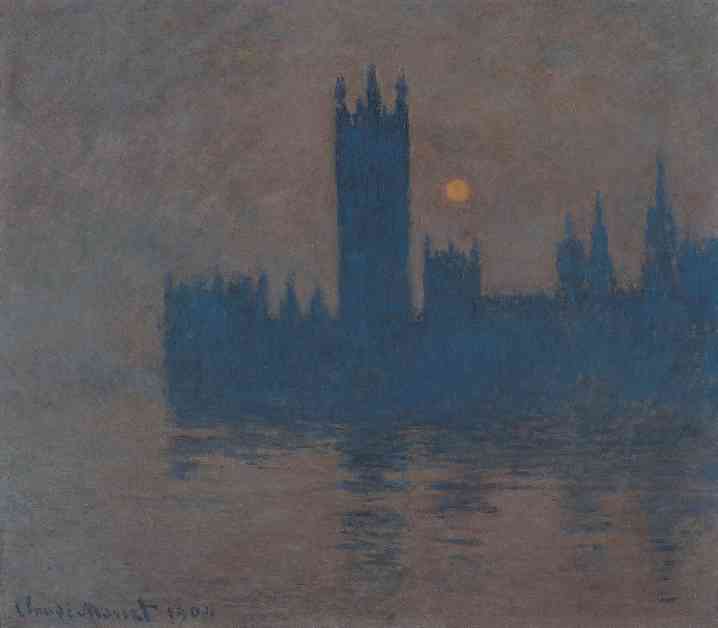Monet’s Thames Paintings Reunited in London After 120 Years
When one thinks of the renowned artist Claude Monet, images of sunsets on the Seine or his iconic water lilies in Giverny often come to mind. However, Monet’s lesser-known fascination with the industrial landscapes of London is now being brought to light in a groundbreaking exhibition at the Courtauld in London. The exhibition, titled “Monet in London: Views of the Thames,” showcases 21 paintings that were part of a larger collection of 37 works that debuted in Paris in 1904. This reunion of Monet’s Thames paintings in London after 120 years is a momentous occasion for art enthusiasts and historians alike.
Monet’s interest in the city of London was sparked during his first visit in 1870, and he returned to the capital three times between 1899 and 1901 to capture the ever-changing atmospheric conditions along the river Thames. The artist’s intention to exhibit his “Thames” series in London never materialized during his lifetime, making this exhibition a long-awaited realization of his vision. The Courtauld’s proximity to Monet’s main subjects, such as Waterloo Bridge, Charing Cross Bridge, and the Houses of Parliament, adds an extra layer of significance to the showcase.
As visitors explore Monet’s depictions of the Thames, they will witness the transformation of London’s smog-filled skies into a vibrant cityscape of flashing lights and modern skyscrapers. The evolution of the city’s atmosphere from Monet’s era to the present day is a testament to the passage of time and the enduring appeal of his impressionistic style. The juxtaposition of Monet’s hazy silhouettes of London landmarks with the bustling metropolis of today creates a striking contrast that highlights the artist’s unique perspective on the city.
One of the key elements that drew Monet back to the Thames time and again was the city’s idiosyncratic climate, which presented him with a wealth of visual effects to capture on canvas. In a letter to his wife in 1900, Monet marveled at the amazing effects he observed during his time along the river Thames, emphasizing the ever-changing nature of the city’s atmosphere. His ability to capture these fleeting moments in his paintings is a testament to his keen eye for detail and his dedication to portraying the essence of London through his art.
The exhibition at the Courtauld offers a rare opportunity to see Monet’s “Thames” series as a cohesive body of work, showcasing the artist’s mastery of capturing the nuances of light, color, and atmosphere. Each painting in the collection is a unique interpretation of the same locations, reflecting Monet’s commitment to representing the ever-changing nature of his surroundings. By viewing the works together, visitors can appreciate the subtle variations in each painting and gain a deeper understanding of Monet’s artistic process.
Exploring Monet’s Preferred Locations
Waterloo Bridge
One of Monet’s preferred locations along the Thames was Waterloo Bridge, which he depicted in various lighting conditions and weather patterns. From his vantage point at the Savoy Hotel, Monet observed the bustling activity on the river, capturing the movement of horse-drawn buses and barges passing beneath the bridge. The artist’s use of quick brushstrokes and vibrant colors brings the scene to life, emphasizing the dynamic nature of the river as a working thoroughfare.
Houses of Parliament
Another iconic subject for Monet was the Houses of Parliament, which he painted from a terrace at St Thomas’s Hospital on the south bank of the Thames. The dramatic neo-Gothic architecture of the building provided a striking contrast to the misty backdrop of the river, with the setting sun casting a warm glow over the scene. Monet’s skillful use of complementary colors and subtle variations in light capture the ethereal beauty of the moment, showcasing his ability to convey the mood and atmosphere of the city.
Charing Cross Bridge
Monet’s studies of Charing Cross Bridge offer a glimpse into everyday life in London, with trains billowing steam as they cross the river. The artist’s subdued palette and soft brushwork create a sense of mystery and tranquility, as the forms of the bridge emerge from the foggy atmosphere. In some of his paintings, the composition borders on abstraction, with the fog dissolving the boundaries between objects and creating a sense of unity in the scene. Monet’s unique interpretation of Charing Cross Bridge highlights his ability to capture the essence of the city in all its complexity.
In conclusion, Monet’s Thames paintings provide a captivating glimpse into the artist’s fascination with London and its ever-changing atmosphere. The exhibition at the Courtauld offers a rare opportunity to see these iconic works reunited after more than a century, showcasing Monet’s mastery of light, color, and atmosphere. By exploring the artist’s preferred locations along the Thames, visitors can gain a deeper appreciation for Monet’s unique vision and his enduring legacy in the world of art.
